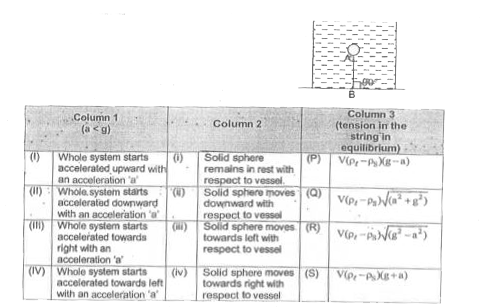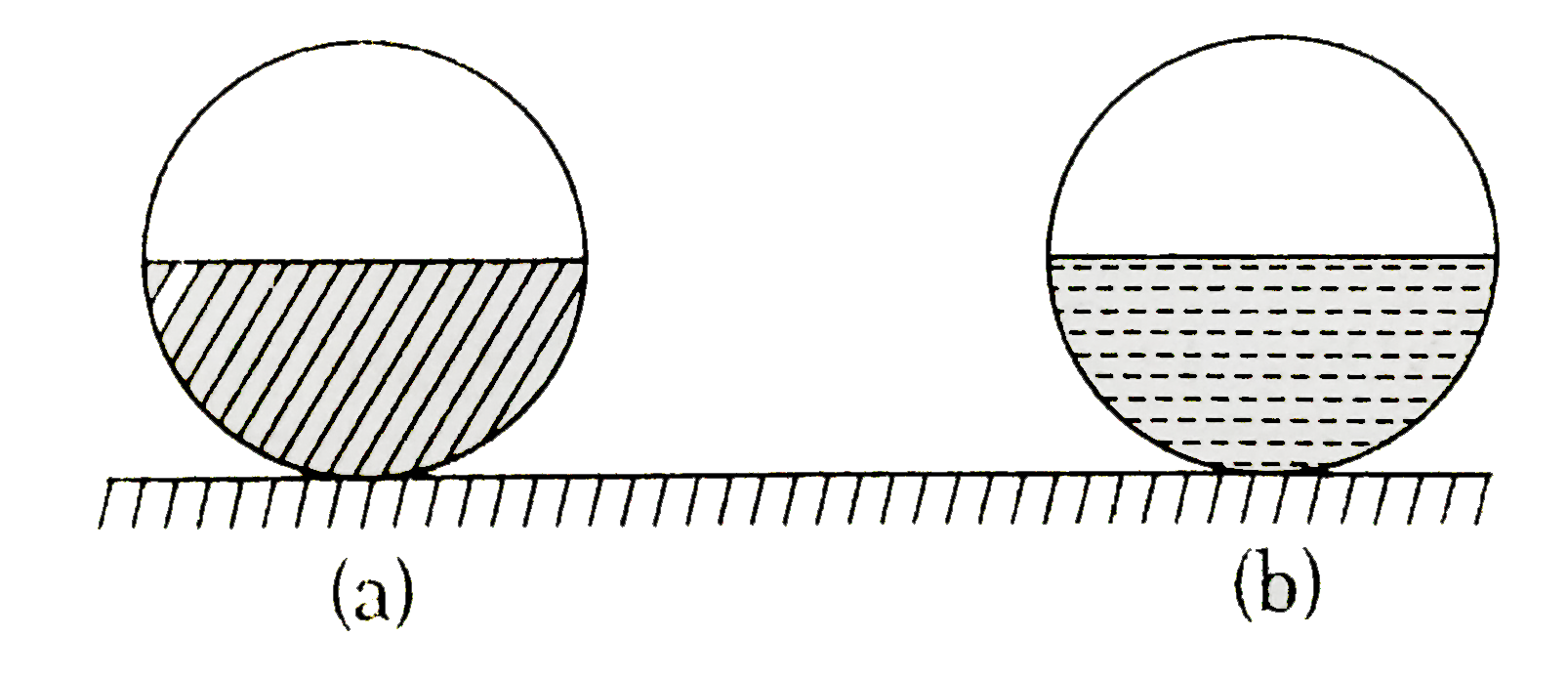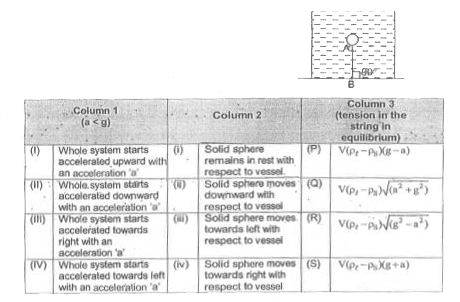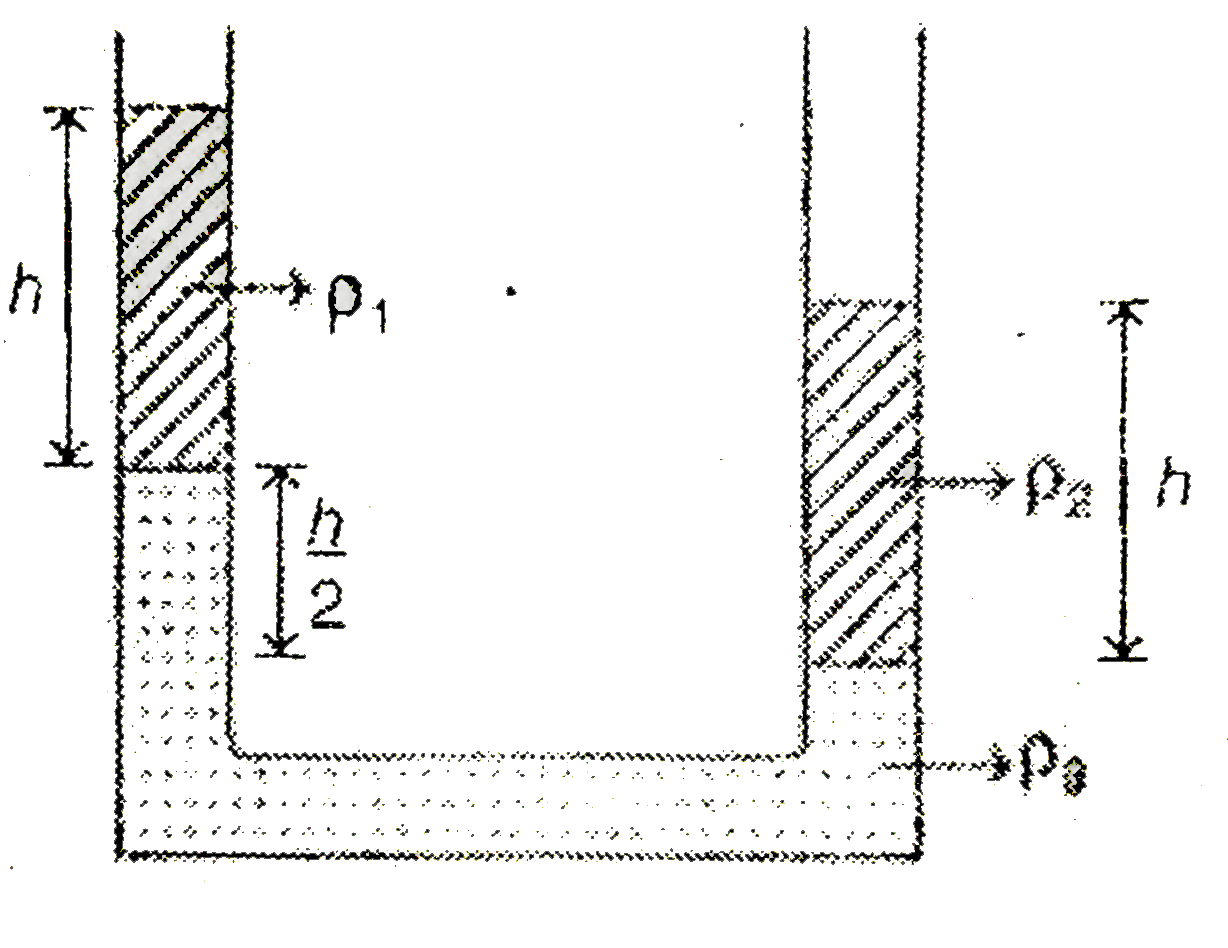Three identical vessels are filled with equal masses of three different liquids A,B and C(ρA>ρB>ρC). The pressure at the base will be
Equal in all vessels
Maximum in vessel A
Maximum in vessel B
Maximum in vessel C
The correct Answer is:A
Step by step video, text & image solution for Three identical vessels are filled with equal masses of three different liquids A,B and C(rho_(A) gt rho_(B) gt rho_(C)). The pressure at the base will be by Physics experts to help you in doubts & scoring excellent marks in Class 11 exams.
Topper's Solved these Questions
Similar Questions
Equal mass of three liquids are kept in three identical cuylindricasl vessels A, B and C. the densities are ρA,ρB,ρCwithρA<ρB<ρC. The force on the base will be
View SolutionThe following table has 3 comumn and 4 rows . . Based on table , there are Three questions . Each question has Four optios (A),(B) (C ) and (D) . ONLY One of these four options is correct .
A solid sphere of volume V and density ρS is tied by light inextensible string AB with the bottom surface of the vessel as shown in the figure . The vessel is filled with a liquid of density ρt .(given ρl>ρs)

Choose the correct combination in which tension in the string is maximum.View Solution
Knowledge Check
- Question 1 - Select One
Three identical vessels are filled to the same height with three different liquids A, B and C(ρA>ρB>ρC). The pressure at the base will be
AEqual in all vesselsBMaximum in vessel ACMaximum in vessel BDMaximum in vessel C - Question 2 - Select One
Assertion: Two identical spherical spheres are half filled with two liquids of densities ρ1 and ρ2(>ρ1). The center of mass of both the spheres lie at same level.

Reason: The center of mass will lie at center of the sphere.AIf both Assertion and Reason are correct and Reason is the correct explanation of Assertion.BIf both Assertion and Reason are correct but Reason is not the correct explanation of Assertion.CIf Assertion is true but Reason is false.DIf Assertion is false but Reason is true. - Question 3 - Select One
Three liquids of equal masses are taken in three identical cubical vessels A, B and C. Their densities are ρA,ρB and ρC respectively but ρA<ρB<ρC. The force exerted by the liquid on the base of the cubical vessel is
Amaximum in vessel CBminimum in vessel CCthe same in all the vesselsDmaximum in vessel A
The following table has 3 comumn and 4 rows . . Based on table , there are Three questions . Each question has Four optios (A),(B) (C ) and (D) . ONLY One of these four options is correct .
A solid sphere of volume V and density ρS is tied by light inextensible string AB with the bottom surface of the vessel as shown in the figure . The vessel is filled with a liquid of density ρt .(given ρl>ρs)

Choose the correct combinations .View SolutionThree liquids of equal masses are taken in three identical cubical vessels A,B and C. Their densities are ρA,ρB and ρC respectively but ρA<ρB<ρC. The force exerted by the liquid on the base of the cubical vessel is
View SolutionTwo circular discs A and B have equal masses and uniform thickness but have densities ρ1 and ρ2 such that ρ1>ρ2 . Their moments of inertia is
View SolutionThree different liquids are filled in a U-tube as shown in figure. Their densities are ρ1,ρ2 and ρ3 respectively. From the figure we may conclude that
 View Solution
View SolutionA thin uniform tube is bent into a circle of radius r in the vertical plane. Equal volumes of two immiscible liquids, whose densities are ρ1 and ρ2(ρ1>ρ2) fill half the circle. The angle θ between the radius vector passing though the common interface and the vertical is :
View Solution

